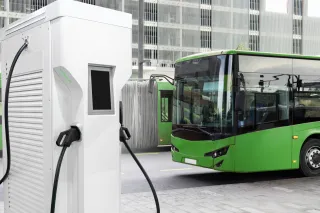VTT’s new sensor system helps stop traffic accidents and improves the productivity of the mining industry. The innovation is part of wider efforts where reliable sensor solutions are created for challenging environments and extreme weather conditions.
Read the summary
- The system has been successfully tested on Indian railroads, allowing trains to increase speed safely and reduce accident rates during foggy conditions.
- The technology holds potential for application in other regions prone to foggy weather, and can improve productivity and safety in mining operations.
- VTT and Tooltech plan to export the technology to developing markets, further expanding the impact of this innovative sensor solution.
This summary is written by AI and checked by a human.
Helsinki, Finland (May XXth, 2025) Exceptional weather conditions, like thick fog, heavy rain, and snow storms, cause significant safety risks and costs in the transport and mining industries every year. VTT Technical Research Centre of Finland and Finnish technology and Indian industrial engineering company Tooltech have developed a new environmental monitoring system that enables detecting obstacles efficiently in extremely poor to almost no visibility.
Consisting of software and a sensing box device installed onto the front of the train, the new sensor system combines radar, thermal camera, satellite positioning, and AI. The system can detect humans and animals from more than 200 meters (more than 218 yards) and signal the driver of the vehicle instantly.
The technology has been tested with promising results on the railroads of India that people and animals, like dogs, cows, and elephants, often cross. Collisions are commonplace and trains can travel safely in the foggy conditions of January–March only at 20 km/h.
According to tests, the technology allows the trains to significantly increase their speed safely while simultaneously decreasing the number of accidents. The system is currently undergoing evaluation at The Automotive Research Association of India (ARAI). The end-user of the system will be Indian Railways, the railway company owned by the state of India.
“The test results in India show that the technology delivers a dramatic improvement to safety. There is also potential for applying the technology in Europe and the United States. For example, Germany and California experience up to a hundred foggy days a year,” says Matti Kutila, Research Team Leader at VTT.
The sensor system can also be used in the mining industry where unplanned operational shutdowns caused by weather conditions cause major financial losses. The technology helps decrease the number of standstills by making work in extreme conditions safer.
“The sensor system improves the productivity of the work machines and improves safety. As the number of unplanned shutdowns decreases, capacity utilization of the machinery goes up and production volumes increase. This affects the bottom line of the mines directly,” says Atul Khanna, Director of Tooltech.
The sensor system developed for India is part of VTT’s work to create reliable sensor solutions for challenging environments and extreme weather conditions. VTT and Tooltech Europe intend to export the technology to other developing markets.
Media kit
Image 1. Experts tune equipment parameters and install software in the locomotive cabin.
Image 2. Experts are checking the equipment's visual range and operational performance.
Image 3. Camera device is mounted on the roof of the locomotive.
The video illustrates how sensor technology installed on the train improves visibility for the train driver in challenging conditions.
Get to know our experts

Dr. Matti Kutila is a leading expert in autonomous driving and the practical development of robotic vehicles. He has headed VTT’s Automated Vehicles Team since 2020 and has over 25 years of experience in solving real-world challenges in vehicle automation. His team has developed several pioneering platforms – including Marilyn, Martti, and Heluna – for use in demanding environments and European innovation projects.
Matti specialises in optical sensors, sensor fusion, and automated driving systems. He has led major EU-funded R&D projects and built international expert teams focused on making autonomous vehicles reliable even in challenging conditions – from poor visibility and snowy roads to disrupted GPS signals.
"In ten years, weather will no longer stop robot vehicles – and in a hundred years, land, sea and air traffic will be seamlessly connected, thanks to engineering creativity!"










